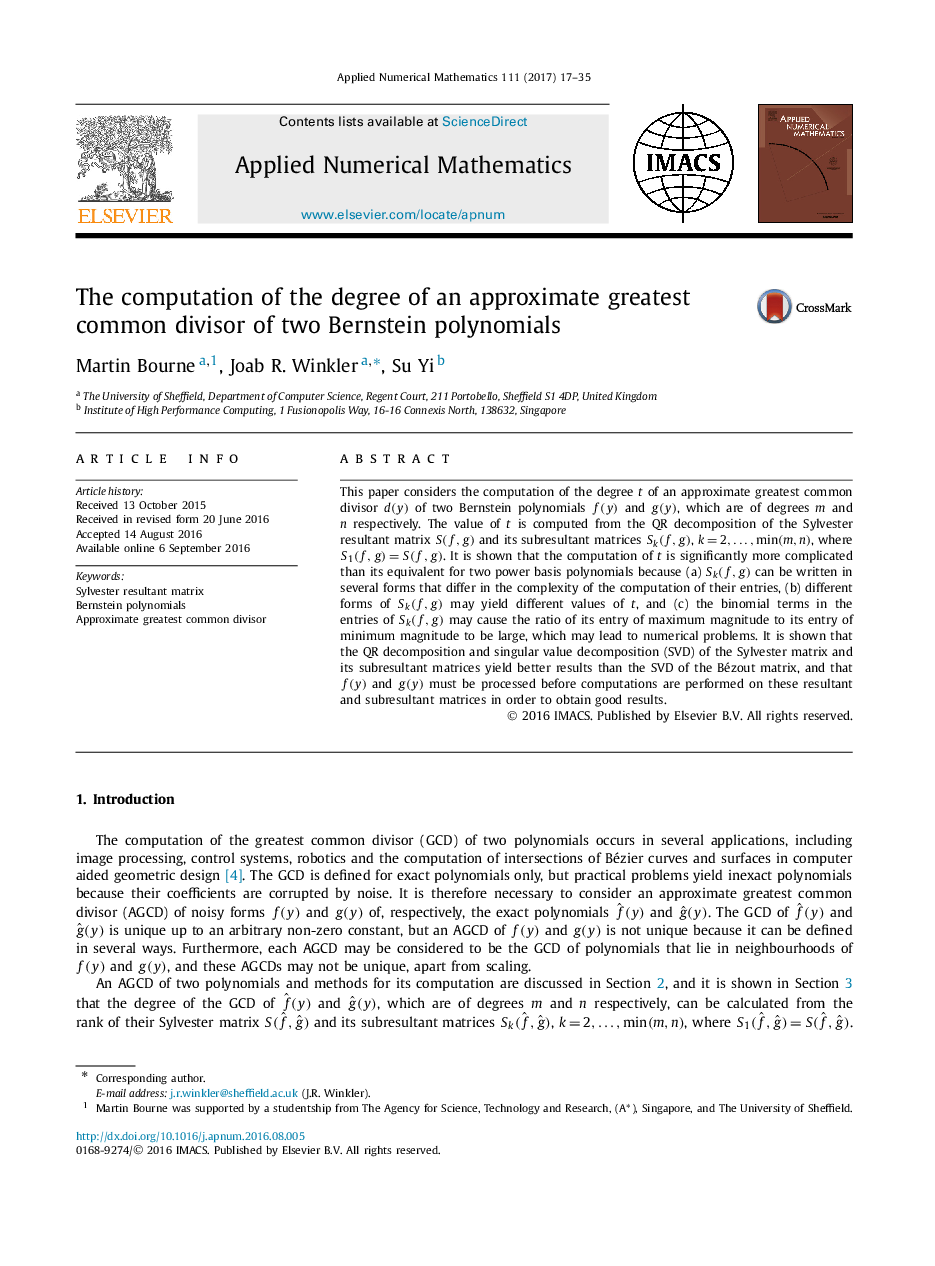| Article ID | Journal | Published Year | Pages | File Type |
|---|---|---|---|---|
| 4644803 | Applied Numerical Mathematics | 2017 | 19 Pages |
•The standard form of the Sylvester matrix yields poor results for polynomial computations because of the combinatorial factors. An improved form of this matrix is therefore developed.•The QR decomposition of the Sylvester matrix and its subresultant matrices can be used to calculate the degree of an approximate greatest common divisor of two Bernstein polynomials.•The polynomials must be processed by three operations before an approximate greatest common divisor is computed.•An equation between successive subresultant matrices of the resultant matrix is established.
This paper considers the computation of the degree t of an approximate greatest common divisor d(y)d(y) of two Bernstein polynomials f(y)f(y) and g(y)g(y), which are of degrees m and n respectively. The value of t is computed from the QR decomposition of the Sylvester resultant matrix S(f,g)S(f,g) and its subresultant matrices Sk(f,g)Sk(f,g), k=2,…,min(m,n)k=2,…,min(m,n), where S1(f,g)=S(f,g)S1(f,g)=S(f,g). It is shown that the computation of t is significantly more complicated than its equivalent for two power basis polynomials because (a) Sk(f,g)Sk(f,g) can be written in several forms that differ in the complexity of the computation of their entries, (b) different forms of Sk(f,g)Sk(f,g) may yield different values of t , and (c) the binomial terms in the entries of Sk(f,g)Sk(f,g) may cause the ratio of its entry of maximum magnitude to its entry of minimum magnitude to be large, which may lead to numerical problems. It is shown that the QR decomposition and singular value decomposition (SVD) of the Sylvester matrix and its subresultant matrices yield better results than the SVD of the Bézout matrix, and that f(y)f(y) and g(y)g(y) must be processed before computations are performed on these resultant and subresultant matrices in order to obtain good results.
